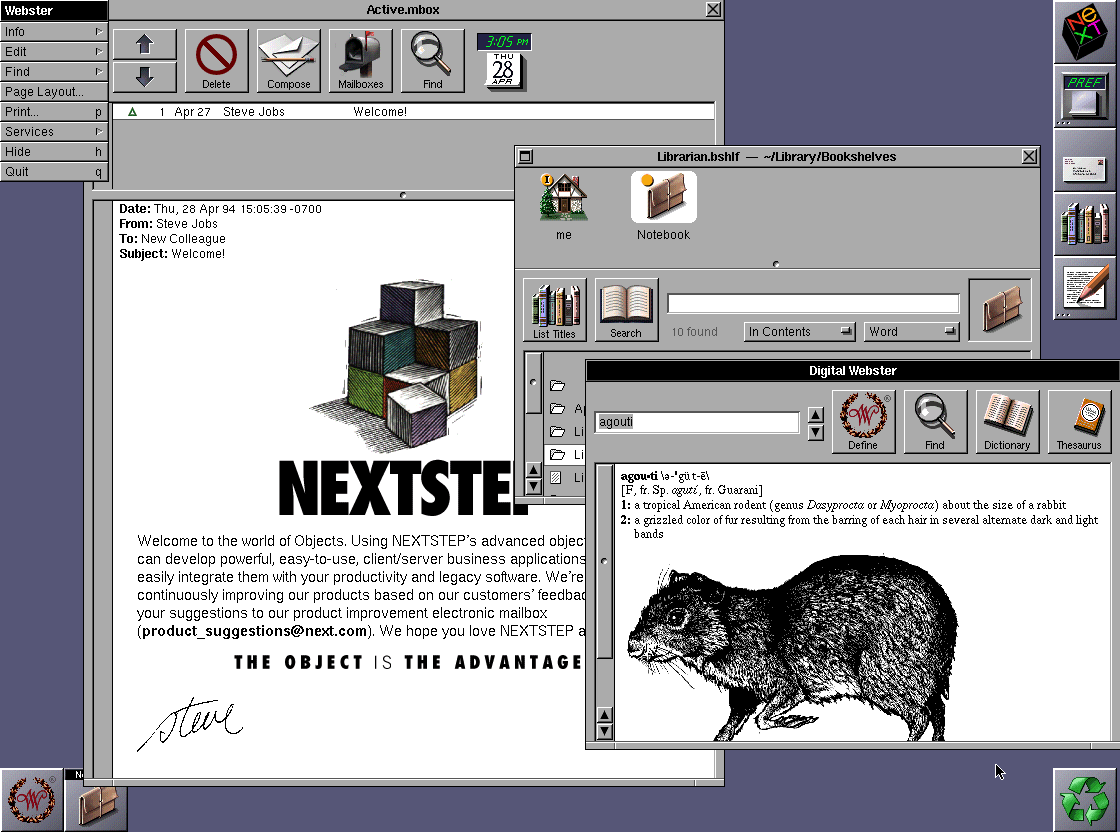 September 18, 1989: Steve Jobs’ company NeXT Inc. ships version 1.0 of NeXTStep, its object-oriented, multitasking operating system.
September 18, 1989: Steve Jobs’ company NeXT Inc. ships version 1.0 of NeXTStep, its object-oriented, multitasking operating system.
Incredibly advanced for its time, NeXTStep is described by The New York Times as “Macintosh on steroids.” In an ironic twist, the operating system Jobs plans to use to compete with Cupertino turns out to be one of the things that saves Apple a decade later.
NeXTStep was years ahead of its time
NeXTStep was first previewed as far back as 1986. NeXT released its first beta for the NeXT Computer in October 1988, but it took almost another full year for the complete version to reach customers. The delays were not unusual for NeXT, which benefitted and suffered in equal measure from Jobs’ perfectionist tendencies.
Jobs, however, disputed the fact that NeXT was running late. Instead, he argued, it was early — “five years ahead of its time.”
NeXTStep was developed primarily by Avie Tevanian. The coder previously worked on the Mach microkernel, a supercharged version of UNIX, at Carnegie Mellon University.
Jobs convinced Tevanian to join NeXT instead of taking what, in the short term, would have been a far more lucrative job at Microsoft. Tevanian later joined Apple in 1997, before leaving in 2006 after serving as chief software technology officer. Another key employee on NeXTStep was Bud Tribble, who had been a member of the original Macintosh design team.
One of the neat features of NeXTStep was its focus on object-oriented programming, or OOP. This made it easier for developers to create applications. One memorable OOP toolkit became WebObjects, which helped companies build Web-based services.
As the above video shows, NeXTStep looks surprisingly close to OS X today. You can see a few stylistic differences, but it packed all the ingredients to eventually form the basis for OS X. The most recognizable feature? A dock for frequently used programs or applets.
The NeXTStep in Steve Jobs’ career
Before it got to that point, NeXT tried and failed to make a serious go of its hardware business. Despite producing beautifully designed and technically superior machines (this was the system Tim Berners-Lee used to develop the World Wide Web while at CERN), NeXT stopped making computers in 1993 and started to focus on software.
NeXT subsequently reconfigured NeXTStep as OpenStep, with the goal of licensing it to companies like Intel. After Apple ran into problems developing its next-generation operating system, Copland, the company acquired NeXT in 1996. A few years later, Jobs, Apple’s newly reinstated CEO, announced the development of OS X.
Did you ever use a NeXT computer or the NeXTStep operating system? Leave your comments below.
Sign up for our free Apple history email


